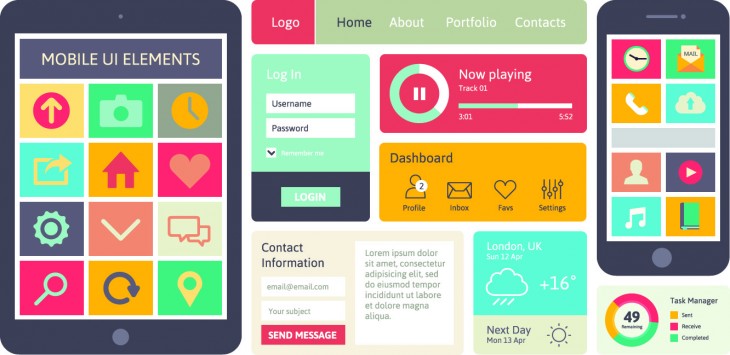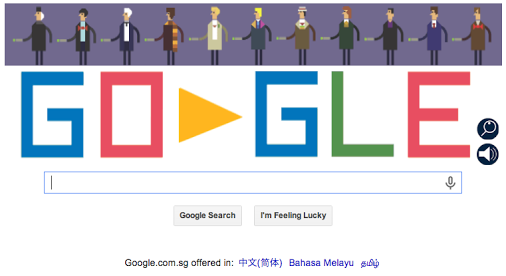
|
|
نمایی از هلال ماه از بالای اتمسفر (جو) کره زمین. این عکس از زاویه ۲۱٫۵ درجه شمالی گرفته شده است. نگارههای برگزیدهٔ روزهای اخیر: پلنگ ایرانی
– دیکدیک کرک
– خمیازه یک شیر نر
|
Shared posts
نگارهٔ برگزیدهٔ ویکیپدیا در ۵ دسامبر ۲۰۱۳
Write your post-mortem before your startup dies
This is a guest post by Aaron Schwartz, founder and CEO at Modify Industries.
We’re in a strange place. I’ve been running Modify Watches for three years now. Our team is growing. We’ve been featured on the “Today Show,” “Good Morning America,” Forbes.com, Self, Shape, and Lucky in the last six months alone. We have over 25,000 Facebook fans who actively vote on all of the watches we produce. And we just raised our first round of funding.
Yet we only have six months to live. If things stay exactly as they are, Modify will be bankrupt in six months.
We can always cut back on salary or, worst case, on staff to accomplish the same goal. But those don’t feel like real options at this point. Our team has worked hard, together, and we have all earned the right to keep working hard on our vision. So, I’m writing our premature post-mortem.
Two experiences recently have made me think this way. My cousin David runs a startup called Wireless Environment. They make amazing emergency LED lighting that’s wirelessly connected, providing an affordable and well-designed way to protect your family. Over a drink recently I discussed my hope that our sales would blow through our costs soon, as I thought we were on the trajectory. Still, he read through my nerves and said, “Let’s assume Modify dies in nine months. Will you be kicking yourself, saying ‘If only I had done X we might have made it?” Huh.
The next week I was reading Decisive by Dan and Chip Heath. The authors recount a story about Andy Grove and Gordon Moore at Intel. The two leaders were trying to figure out if Intel should continue focusing on its large legacy business, memory, or instead focus on the small-yet-growing microprocessor business. One day Grove, the president, asked Moore, the Chairman and CEO, “If we got kicked out and the board brought in a new CEO, what do you think he would do?” Grove replied that they would get out of memory immediately. As the Heath brothers put it, this was Grove and Moore’s “moment of clarity.”
For me too. Why let the world happen to Modify? So we invested the time internally and consulted our Board and other advisers. As a result of this premature post-mortem (or, more accurately, pre-mortem), we have made four significant changes:
1. Focused on team alignment and happiness
Realizing that our greatest asset was our team, we have invested in making sure that everyone is working toward a shared goal. We took a few steps to set our norms in something we call “The Modify Way.”
- Every team member wrote down the adjectives that describe our culture (good and bad). We then wrote the adjectives that describe the type of company where we want to passionately work.
- We observed patterns from the answers and drafted a long (really long!) document that explained who we were and who we wanted to become.
- We had multiple sessions, each lasting over a few hours, to discuss the first draft. Our goal was to diverge again and take a step back. One powerful part of these discussions was looking at the culture documents from a few businesses we deeply respect: Magoosh, Buffer, and Moz . Importantly, when one of our teammates needed to miss one session, we didn’t hold it. The Modify Way was going to be built by the entire team.
- We narrowed the document to six bullet points and then spent some time making the wording crisp.
2. Ruthlessly cut projects that we cannot do well
Having an experimental budget is necessary – after all, growth needs to come from somewhere. But we were doing too many things decently. We have created an internal mantra of “do fewer things, better”.
3. Invested in major opportunities that we believe will have a large, short- or medium-term payoff
Modify made our biggest financial commitment ever in procuring a license with Major League Baseball. Our fans have asked for it, and there is nothing like passion to move a product. So we made a huge bet – more expensive than any employee’s salary – and are focusing on executing it well. Focusing on the near-term is important as we need cash!
4. Started raising the next round now
We believe in what we are doing, and our current investors are pleased with our progress. There is a chance we will continue improving and yet still run into a cash shortfall. So I’ve invested some of my time in cultivating new relationships. After all, as Mark Suster writes, investors like to invest in lines, not dots.
When you ask the “if only” question, there is no right answer. There’s only your instinct. By writing your post-mortem early, the hope is you head off major issues and find opportunities before it is too late. Get through the rut quickly, and hopefully you can ask more fun questions like, “How can we grow our sales 20x instead of 10x?”
Aaron Schwartz is founder and CEO at Modify Industries, Inc., which designs interchangeable custom watches known as Modify Watches. He loves working on startup ideas and has spent innumerable (happy) hours advising friends and former students on how to grow their ideas.
The Young Entrepreneur Council (YEC) is an invite-only organization comprised of the world’s most promising young entrepreneurs. In partnership with Citi, YEC recently launched StartupCollective, a free virtual mentorship program that helps millions of entrepreneurs start and grow businesses.
Image via ►visualpanic / Flickr cc
Related Articles
-
 Why you should ignore startup failure stats
Why you should ignore startup failure stats
-
 Don’t choke your startup – cut the cord. Gradually.
Don’t choke your startup – cut the cord. Gradually.
-
 Don’t go down with your startup! 5 legal protections for founders
Don’t go down with your startup! 5 legal protections for founders
-
 If this startup succeeds, you’ll only need to charge your phone once a week (exclusive)
If this startup succeeds, you’ll only need to charge your phone once a week (exclusive)
-
 How Silicon Valley can kill your startup
How Silicon Valley can kill your startup
نام امامزاده بیژن عوض شد
Is 10,000 steps really the best measurement of our health?

Belle Beth Cooper is the co-founder of Hello Code and Content Crafter at Buffer.
If you’ve paid any attention to the recent surge of interest in the quantified self movement, you’ll have heard this magic measurement, “10,000 steps,” bandied around. For many of us who have only recently jumped on the quantified self bandwagon and grabbed an app or a dedicated bit of gadgetry to track our daily activity, it may be the first time we’ve heard of this supposedly perfect goal.
While some tracking services let you set your own goal based on how much activity you want to get done each day, many recommend 10,000 steps and some, such as Fitbit, even have this as a pre-set goal for everyone.
For example, I personally use both a Jawbone UP and a Misfit Shine to track my daily exercise and sleep. Both of these trackers let the user choose a goal within the accompanying app, though Jawbone has clear recommendations: 8 hours sleep and 10,000 daily steps.
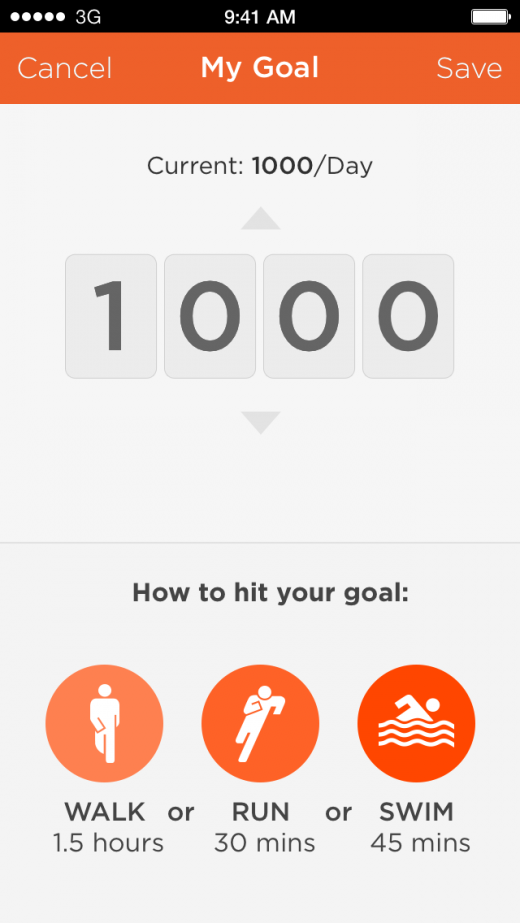
 The Shine app uses a points system to set and track your progress toward a goal, translating it into activity time. For instance, my current goal of 1000 points is apparently equivalent to 1.5 hours walking, 30 minutes running, or 45 minutes swimming. As I progress towards my goal, my tracked activity gets translated into number of steps, calories burned and kilometres walked (or run). 1000 Shine points is roughly the equivalent of 10,000 steps, just presented in a different way.
The Shine app uses a points system to set and track your progress toward a goal, translating it into activity time. For instance, my current goal of 1000 points is apparently equivalent to 1.5 hours walking, 30 minutes running, or 45 minutes swimming. As I progress towards my goal, my tracked activity gets translated into number of steps, calories burned and kilometres walked (or run). 1000 Shine points is roughly the equivalent of 10,000 steps, just presented in a different way.
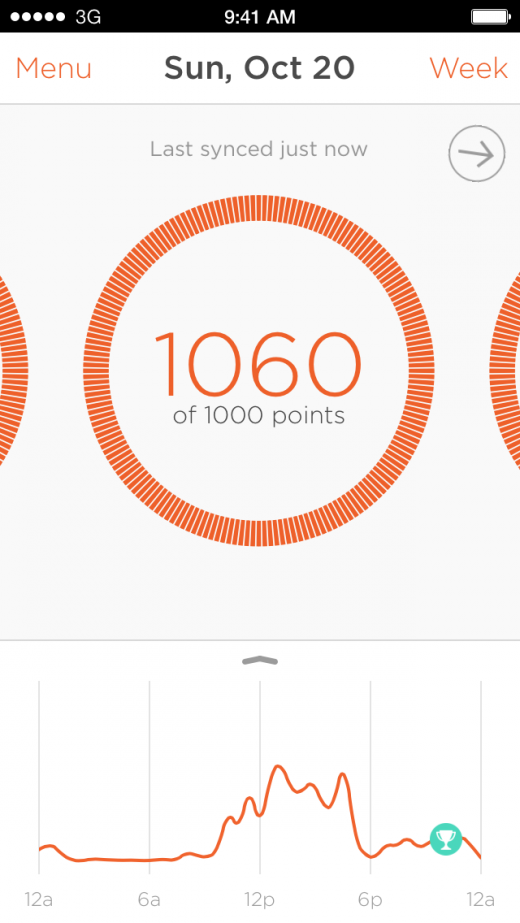
 So is 10,000 steps really the perfect amount for everyone? And is number of steps even the best way to measure our daily activity?
So is 10,000 steps really the perfect amount for everyone? And is number of steps even the best way to measure our daily activity?
Let’s take a look at the other options available and why this particular metric has become the favored norm.
How to track your life
An iOS app-only activity tracker is Argus, which suggests 8 to 10,000 steps as a daily goal, with 10,000 being the highest goal you can set. Many other trackers, such as the two mentioned above, let the user have more control, setting goals from as low as 2,000 steps to 20,000.
Other popular trackers like the Withings Pulse, Moves app, and offerings from Fitbit including the One and Flex all count steps in an attempt to help users become (and stay) more active.
On the other side of the table are trackers like the Shine, which translates user activity into proprietary measurements, like points. The Nike+ Fuelband uses Nike Fuel points to credit users for their activity. Unlike a simple steps goal, translating activity into points makes it possible to include fitness activities like basketball or swimming (in the case of the Shine).
Another approach is taken by the recently released iOS app, Human, is to simply track minutes of activity spent. Human comes with one very simple, pre-set goal for the user: spend 30 minutes of your day being active.
Why count steps?
With so many ways to track our daily activity, why should we stick with counting our steps? It turns out there’s some scientific backing in this measurement method, though more recent studies have refuted the exact number suggested.
The recommendation that we aim to walk 10,000 steps per day originally came from Japan in the early 60s.
The suggestion came from research led by Dr. Yoshiro Hatano, which showed that people were walking an average of 3,500 to 5000 steps per day. Dr Hatano estimated that walking 10,000 steps would be enough to burn through roughly 20 percent of our caloric intake, on average.
While the research findings made the 10,000 steps goal popular in Japan, it took years for this idea to reach a larger audience. In the early 90s, the increase in obesity rates led to more interest in Dr Hatano’s 10,000 steps research.
More recent research in Melbourne has shown that a combination of gym sessions three times per week and 10,000 steps daily can improve an employee’s productivity to the tune of $2,500 per year.
The 10,000 steps alone improved overall fitness and brain function by two percent after eight weeks. Adding gym sessions doubled that figure.
This daily recommendation is currently endorsed by the World Health Organisation (WHO), US Centre for Disease Control, US Surgeon General, American Heart Foundation, US Department of Health & Human Services, and the National Heart Foundation of Australia to improve overall health and reduce the risk of disease.
However, a collaborative study including researchers from the U.S., Australia, Canada, France, and Sweden discovered that, for weight control at least, the number actually varies quite a bit. Depending on age and gender, this study found that weight control could be achieved with a minimum of between 8,000 (for women 60+) to 12,000 (women 18 to 40 and men 18 to 50).
These estimates to put 10,000 steps snugly in the average seat, however, so perhaps it’s not a bad general goal to start with.
Counting steps isn’t the only option
Supposing we don’t want to count our daily steps to monitor our activity levels, we can look at time and intensity measures instead. Several major health bodies recommend time- and intensity-based daily goals.
2.5 hours exercise per week
The USA’s Centers for Disease Control and Prevention website breaks down official health and exercise guidelines for American adults which can be distilled into this nugget of info:
Official exercise guidelines say adults should get two-and-a-half hours of moderate-intensity exercise a week.
According to the CDC, walking at a pace of 3 mph (“a good clip but manageable by most”) counts as moderate-intensity exercise.
The recommendation also explains that bursts as short as ten minutes are long enough to make an impact when added up over time. The final recommendation is to try going for a ten-minute brisk walk, three times per day, five days per week, to achieve the total of 150 minutes of activity.
30 minutes per day
Official guidelines from the Australian government and the American Heart Association recommend a minimum of 30 minutes of moderate-intensity physical activity, “on most, preferably all, days” for adults.
Like the CDC, these recommendations suggest that ten-minute increments are appropriate for accumulating activity over time.
Many fitness tracking devices and apps will show you how many minutes you’ve been active for. Fitbit and the Misfit Shine in particular separate your active time by intensity, as well, so you can see whether you’ve been doing moderate-intensity exercise as recommended.
The Human app is one of the few activity tracking options that primarily focuses on time spent over a score of points or steps.
Choosing for you
Choosing a goal for fitness, weight-loss or simple well-being is very personal. So many aspects of our lives affect each other that taking a general recommendation in isolation is unlikely to be appropriate for your lifestyle or help you achieve the results you want.
Ultimately, you need to experiment and work out what works best for you. For instance, you may want to track a time-based exercise goal with a tracker like the Jawbone UP, so you’ll need to make a rough translation of time to steps in order to make this work for you.
Starting with a general guideline can be a useful way to give yourself a goal to work on if you’re unsure of what will suit your lifestyle. Overall, the common recommendation that comes from everyone is to simply be more active. How much, and how you track that, is up to you.
Image credit: Phase4Studios/Shutterstock
Why Ruby?
I've been a Microsoft developer for decades now. I weaned myself on various flavors of home computer Microsoft Basic, and I got my first paid programming gigs in Microsoft FoxPro, Microsoft Access, and Microsoft Visual Basic. I have seen the future of programming, my friends, and it is terrible CRUD apps running on Wintel boxes!
Of course, we went on to build Stack Overflow in Microsoft .NET. That's a big reason it's still as fast as it is. So one of the most frequently asked questions after we announced Discourse was:
Why didn't you build Discourse in .NET, too?
Let me be clear about something: I love .NET. One of the greatest thrills of my professional career was getting the opportunity to place a Coding Horror sticker in the hand of Anders Hejlsberg. Pardon my inner fanboy for a moment, but oh man I still get chills. There are maybe fifty world class computer language designers on the planet. Anders is the only one of them who built Turbo Pascal and Delphi. It is thanks to Anders' expert guidance that .NET started out such a remarkably well designed language – literally what Java should have been on every conceivable level – and has continued to evolve in remarkably practical ways over the last 10 years, leveraging the strengths of other influential dynamically typed languages.
All that said, it's true that I intentionally chose not to use .NET for my next project. So you might expect to find an angry, righteous screed here about how much happier I am leaving the oppressive shackles of my Microsoft masters behind. Free at last, free at least, thank God almighty I'm free at last!
Sorry. I already wrote that post five years ago.
Like any pragmatic programmer, I pick the appropriate tool for the job at hand. And as much as I may love .NET, it would be an extraordinarily poor choice for an 100% open source project like Discourse. Why? Three reasons, mainly:
-
The licensing. My God, the licensing. It's not so much the money, as the infernal, mind-bending tax code level complexity involved in making sure all your software is properly licensed: determining what 'level' and 'edition' you are licensed at, who is licensed to use what, which servers are licensed... wait, what? Sorry, I passed out there for a minute when I was attacked by rabid licensing weasels.
I'm not inclined to make grand pronouncements about the future of software, but if anything kills off commercial software, let me tell you, it won't be open source software. They needn't bother. Commercial software will gleefully strangle itself to death on its own licensing terms.
-
The friction. If you want to build truly viable open source software, you need people to contribute to your project, so that it is a living, breathing, growing thing. And unless you can download all the software you need to hack on your project freely from all over the Internet, no strings attached, there's just … too much friction.
If Stack Overflow taught me anything, it is that we now live in a world where the next brilliant software engineer can come from anywhere on the planet. I'm talking places this ugly American programmer has never heard of, where they speak crazy nonsense moon languages I can't understand. But get this. Stand back while I blow your mind, people: these brilliant programmers still code in the same keywords we do! I know, crazy, right?Getting up and running with a Microsoft stack is just plain too hard for a developer in, say, Argentina, or Nepal, or Bulgaria. Open source operating systems, languages, and tool chains are the great equalizer, the basis for the next great generation of programmers all over the world who are going to help us change the world.
-
The ecosystem. When I was at Stack Exchange we strove mightily to make as much of our infrastructure open source as we could. It was something that we made explicit in the compensation guidelines, this idea that we would all be (partially) judged by how much we could do in public, and try to leave behind as many useful, public artifacts of our work as we could. Because wasn't all of Stack Exchange itself, from the very first day, built on your Creative Commons contributions that we all share ownership of?
You can certainly build open source software in .NET. And many do. But it never feels natural. It never feels right. Nobody accepts your patch to a core .NET class library no matter how hard you try. It always feels like you're swimming upstream, in a world of small and large businesses using .NET that really aren't interested in sharing their code with the world – probably because they know it would suck if they did, anyway. It is just not a native part of the Microsoft .NET culture to make things open source, especially not the things that suck. If you are afraid the things you share will suck, that fear will render you incapable of truly and deeply giving back. The most, uh, delightful… bit of open source communities is how they aren't afraid to let it "all hang out", so to speak.
So as a result, for any given task in .NET you might have – if you're lucky – a choice of maybe two decent-ish libraries. Whereas in any popular open source language, you'll easily have a dozen choices for the same task. Yeah, maybe six of them will be broken, obsolete, useless, or downright crazy. But hey, even factoring in some natural open source spoilage, you're still ahead by a factor of three! A winner is you!
As I wrote five years ago:
I'm a pragmatist. For now, I choose to live in the Microsoft universe. But that doesn't mean I'm ignorant of how the other half lives. There's always more than one way to do it, and just because I chose one particular way doesn't make it the right way – or even a particularly good way. Choosing to be provincial and insular is a sure-fire path to ignorance. Learn how the other half lives. Get to know some developers who don't live in the exact same world you do. Find out what tools they're using, and why. If, after getting your feet wet on both sides of the fence, you decide the other half is living better and you want to join them, then I bid you a fond farewell.I no longer live in the Microsoft universe any more. Right, wrong, good, evil, that's just how it turned out for the project we wanted to build.
However, I'd also be lying if I didn't mention that I truly believe the sort of project we are building in Discourse does represent most future software. If you squint your eyes a little, I think you can see a future not too far in the distance where .NET is a specialized niche outside the mainstream.
But why Ruby? Well, the short and not very glamorous answer is that I had narrowed it down to either Python or Ruby, and my original co-founder Robin Ward has been building major Rails apps since 2006. So that clinched it.
I've always been a little intrigued by Ruby, mostly because of the absolutely gushing praise Steve Yegge had for the language way back in 2006. I've never forgotten this.
For the most part, Ruby took Perl's string processing and Unix integration as-is, meaning the syntax is identical, and so right there, before anything else happens, you already have the Best of Perl. And that's a great start, especially if you don't take the Rest of Perl.
But then Matz took the best of list processing from Lisp, and the best of OO from Smalltalk and other languages, and the best of iterators from CLU, and pretty much the best of everything from everyone.
And he somehow made it all work together so well that you don't even notice that it has all that stuff. I learned Ruby faster than any other language, out of maybe 30 or 40 total; it took me about 3 days before I was more comfortable using Ruby than I was in Perl, after eight years of Perl hacking. It's so consistent that you start being able to guess how things will work, and you're right most of the time. It's beautiful. And fun. And practical.
Steve is one of those polyglot programmers I respect so much that I basically just take whatever his opinion is, provided it's not about something wacky like gun control or feminism or T'Pau, and accept it as fact.
I apologize, Steve. I'm sorry it took me 7 years to get around to Ruby. But maybe I was better off waiting a while anyway:
-
Ruby is a decent performer, but you really need to throw fast hardware at it for good performance. Yeah, I know, interpreted languages are what they are, and caching, database, network, blah blah blah. Still, we obtained the absolute fastest CPUs you could buy for the Discourse servers, 4.0 Ghz Ivy Bridge Xeons, and performance is just … good on today's fastest hardware. Not great. Good.
Yes, I'll admit that I am utterly spoiled by the JIT compiled performance of .NET. That's what I am used to. I do sometimes pine away for the bad old days of .NET when we could build pages that serve in well under 50 milliseconds without thinking about it too hard. Interpreted languages aren't going to be able to reach those performance levels. But I can only imagine how rough Ruby performance had to be back in the dark ages of 2006 when CPUs and servers were five times slower than they are today! I'm so very glad that I am hitting Ruby now, with the strong wind of many solid years of Moore's law at our backs.
-
Ruby is maturing up nicely in the 2.0 language release, which happened not more than a month after Discourse was announced. So, yes, the downside is that Ruby is slow. But the upside is there is a lot of low hanging performance fruit in Ruby-land. Like.. a lot a lot. On Discourse we got an across the board 20% performance improvement just upgrading to Ruby 2.0, and we nearly doubled our performance by increasing the default Ruby garbage collection limit. From a future performance perspective, Ruby is nothing but upside.
-
Ruby isn't cool any more. Yeah, you heard me. It's not cool to write Ruby code any more. All the cool people moved on to slinging Scala and Node.js years ago. Our project isn't cool, it's just a bunch of boring old Ruby code. Personally, I'm thrilled that Ruby is now mature enough that the community no longer needs to bother with the pretense of being the coolest kid on the block. That means the rest of us who just like to Get Shit Done can roll up our sleeves and focus on the mission of building stuff with our peers rather than frantically running around trying to suss out the next shiny thing.
And of course the Ruby community is, and always has been, amazing. We never want for great open source gems and great open source contributors. Now is a fantastic time to get into Ruby, in my opinion, whatever your background is.
(However, It's also worth mentioning that Discourse is, if anything, even more of a JavaScript project than a Ruby on Rails project. Don't believe me? Just go to try.discourse.org and view source. A Discourse forum is not so much a website as it is a full-blown JavaScript application that happens to run in your browser.)Even if done in good will and for the best interests of the project, it's still a little scary to totally change your programming stripes overnight after two decades. I've always believed that great programmers learn to love more than one language and programming environment – and I hope the Discourse project is an opportunity for everyone to learn and grow, not just me. So go fork us on GitHub already!
| [advertisement] Hiring developers? Post your open positions with Stack Overflow Careers and reach over 20MM awesome devs already on Stack Overflow. Create your satisfaction-guaranteed job listing today! |
App design Dos and Don’ts: What to keep in mind when designing for a global audience

Designing an app takes a lot of creativity, planning and intensive labor. However, the game gets harder when you’re designing for a global audience. We spoke to some of the hottest global apps and got their top tips to share.
Do: Think global, act local
The value proposition of your app should be similar to all your markets worldwide. However, you should tailor your offering for a local audience.
Ori Goshen, co-founder and vice president of research and development at Tawkon, advises developers to make the core offering consistently worldwide. “Covering, reviewing, and spreading the word about your product would be an easy thing to do,” he says. “With that said, make tailor-made local efforts, campaigns and even features that will make your offering unique to key specific markets.”
Rytis Vitkauskas, CEO and co-founder of YPlan, also goes the extra mile to localize sharing. “When launching in London we made sure we took time to drill down into the psychology of what people’s going out habits were like – what kind of events do people like to attend, does it vary during the week as opposed to the weekend,” he says.
“When it came to launching in New York we knew we’d need to set aside time to do the same again. The product has to be right culturally, what’s hot in London might not translate across the pond.”
Don’t: Execute your strategy remotely
It is commonplace for companies build a network of satellite offices, maintaining one central hub, devolving a small level of decision making to regional centres. “To truly understand a global market you need to be prepared to move around,” Vitkauskas says. “It’s important that senior members of the team spend time in each different location so that they can understand the challenges that each operation faces in each different market.”
Do: Assess the viability of launching in a new market
Since localizing and marketing apps in new markets can prove costly and take up a lot of resources, Vitkauskas advises a deep research for opportunities that are most ripe for expansion.
“When deciding which city to launch in after our London debut, we spent a long time considering a range of different factors – is there a wide selection of venues, are the events themselves strong enough, are there any similar products out there – tempting though it may be to move to a vibrant city, you need to know that it’ll be a fruitful business move.”
Similarly, Goshen recommends localizing your “store front” – app store materials (description, title, screenshots, etc.) and promoting your app locally with a small budget. This serves as a test in the water and will help you validate the product market fit in that specific geography before making big investments.
“At Tawkon, we were looking to get into the European market. So we first translated the app store materials in Spanish, German, French, Italian, sent a translated media package to few local journalists and bloggers at those geographies before deciding which country to focus on. Soon enough, we discovered that France is a great market for us so we pursued it with more resources.
Don’t: Ignore cultural nuances
It is easy to wrongly assume that all markets take to the same language similarly. In reality, they may have very different attitudes to what is acceptable.
 Leigh Garland, Director of Web Technology at Nice Agency reminds developers to consider various cultural interpretations. ”Often, something that might come across as straightforward to Brits, might appear sarcastic or stuffy to an American audience,” he says.
Leigh Garland, Director of Web Technology at Nice Agency reminds developers to consider various cultural interpretations. ”Often, something that might come across as straightforward to Brits, might appear sarcastic or stuffy to an American audience,” he says.
“Likewise that mission statement that sounds forthright and inspiring to your Indian colleagues may well come off as corny or overly sentimental.” It is therefore important to get your copy sense-checked by someone that knows the culture of the country you’re targeting at the very least.
Sander also stresses the importance of paying attention to localized numerical formats and cultural references, claiming that “in some cultures the thumbs up signal is an obscene gesture.”
Do: Get in real content ASAP
Developers should get in real content as soon as possible to test thoroughly in the languages that they’re building for. Garland said that he once created an app for a football betting company.
“We had neatly worked out all the spacing for league table layouts using English clubs. The whole thing blew up when the client expanded the site to include the German and Greek leagues, including such teams as FSV Glückauf Brieske-Senftenberg,” he says. “Not only did many long team names break the layout, but the font we’d selected didn’t support Greek characters.”
Nikolai Sander, Director of Mobile Software Engineering at HotelTonight, also recommends leaving spaces for text in languages like French and German, which are much longer when translated. He believes in always designing a fairly responsive mobile layout.
Dan Kenger, Creative Digital Director at Gin Lane Media, says that some languages have larger, more visual characters, or may read in a different direction altogether. “When the translation is completed, your text may end up somewhere that’s less than ideal, like overtop of a model’s face.”
Don’t: Take visual language lightly
When designing for an international audience, creating a consistent visual language is more important than ever, especially with regards to navigation. “You can’t rely as heavily on copy to give the audience a sense of what to do or where to go, because your message may be literally lost in translation,” Kenger says.
Garland also warns against assuming that user experiences are universal.
“Just because that icon you think means ‘delete’ is obvious to you, it might not be what users in other cultures expect. Your app’s reputation will suffer if users end up deleting items because they thought the icon was actually ‘expand’.
“Just because Facebook does it, doesn’t always mean that the iconography will be familiar globally. It’s important to remember there are countries in the world where other social media networks dominate.”
Do: Double check mobile OS adoption rates
Make sure that you check your audience are actually using the OS that you’re building your app on. “If you’re targeting the U.S. market, by all means only build for iPhone. However in S.E. Asia, where Samsung is top of the pile, you might want to be focusing on Android,” Garland says. “You can’t afford to assume that ‘most people’ have updated to latest OS versions, or even that many have the latest major point version. Get the stats before you start.”
Don’t: Leave out animations altogether

Shivam Gadhia and Ataul Munim of Novoda says the best type of animation helps the user learn more how an app functions. “[Animations act] as visual cues - that is, without having to explicitly tell the user. They can convey information without having to deal with localisation issues.
“Correct implementations require that animations should not degrade the perceived or actual responsiveness of the user interface and should not distract or delay the user from task at hand.”
Do: Use Shuttle
Shuttle is a project management tool that the Square Engineering Team created internally and recently open sourced so that any company can use it to bring their software to the world.
Since every aspect of the app and website must be internationalized when it is launched in a new country, Shuttle lessens the frustrations shared by both developers and translators when trying to take codebase originally written for the U.S. and make it global.
Every time a developer commits code, Shuttle scans the entire code base for content that needs to be translated. The translation team can then gets a list of content that needs to be translated, along with the priority of the content and due date.
Don’t: Assume it will be the same the second time around
While it may sound obvious, it’s crucial that you consider each new problem with fresh eyes where possible. “When drafting business plans, and making projections about growth it can be tempting to rely too heavily on your previous experiences,” Vitkauskas says.
He recommends taking time to think about business challenges creatively and brainstorming a range of different scenarios no matter how absurd they might seem. “It’ll help you adapt to change as and when it comes.”
So there you have it folks – tips from the experts to get you started in globalizing your app. Have we missed out any other tips? Share your thoughts below.
Top image credit: Markus Pfaff/Shutterstock
A comprehensive guide to testing your Web app: How to get the most out of your sessions

We’re now living in a time where users expect as much functionality, reliability and flexibility from Web apps as desktop programs. All our data is slowly but surely moving into the cloud, and businesses are looking to the Web for software to easily implement and deploy across the board – whether it’s accounting, CRM or inventory management. That puts a lot of pressure on developers to deliver rock-solid Web apps that users can genuinely depend on for work and play.
That’s why it’s so important to thoroughly test your Web app before launch. Presenting a quality app that doesn’t break, works efficiently and delights users naturally builds a foundation of trust between you and your customers, and they’ll be happy to use it more often and even refer it to peers. Plus, you’ll have far fewer customer support issues to deal with, leading to savings on costs and manpower.
Let’s take a look at how we can test our web apps to ensure that we’re on track for a successful opening day.
What should you test?
Whether your app helps users edit photos, send invoices, connect with friends or track social influence, you’ll generally need to look at four broad areas while testing your app:
Functionality testing
Users expect apps to function accurately, quickly and consistently. That means you have to kick the tires on everything that helps a user achieve a result of some sort. Some common functional elements that require thorough testing include:
Forms: everything from feedback surveys to creating new to-dos, to subscribing to a newsletter. Check that submissions work correctly and are properly connected to your database, and that all fields accept input as necessary.
File manipulation and calculations: image and document uploads, editing and computation functionality and correct output. Ensure that you try as many scenarios as you can think of in which users might try your app, and accommodate them as far as possible. Also, look at how efficient your app is at computing and displaying results, to allow for a smooth user experience.
Search: if your app allows users to search through content, files or documentation, ensure that your search engine comprehensively indexes this information, updates itself regularly and is quick to look up and display relevant results.
Media components: test for smooth and seamless audio and video playback, animations and interactive media (like games and graphics tools). These components should function as expected and not break or slow down the rest of the app while loading or running.
Scripts and libraries: ensure that your scripts (say, for image display or Ajax page loads) are compatible with all the various browsers your audience may use to access your app, and measure their load times to help optimize performance. If your scripts are only compatible with certain browsers, make sure they degrade gracefully on others so that all users get the best possible experience of your app.
Other elements you should check for complete functionality in, include notification systems, user profiles, and administration dashboards.
User interface and usability testing
Not only should your Web app run like a well-oiled machine, but it should also provide a quality front-end experience for all your users. To achieve this, you’ll need to consider all the visual and textual elements that your users encounter, and test them to ensure they are displayed correctly and efficiently. What should you keep your eye on?
Navigation: all links to and from your homepage should be prominent and pointed to the right destination pages.
Accessibility: ensure, as far as possible, that your app is easy to use even for those with disabilities or impairments of vision or motor functions. The W3C‘s Web Content Accessibility Guidelines should help you identify and approach ways to make your app more universally user-friendly.
Cross browser testing: users will likely access your site from numerous combinations of browsers and operating systems, and your app may not display the same way across all of them. Be sure to test as many of these combinations as possible to ensure that your app works as intended, for as wide a user base as possible.
Error messages and warnings: your app is bound to break at some point, even if it’s not your fault. Make sure that your app is descriptive and helpful when users encounter an issue such as a 404 page or an unsuccessful upload.
Help and documentation: not all users will be equally comfortable using your app; some may need assistance the first few times, while others might experience an issue even though they’re familiar with the product. Run through your app to check that documentation and/or support channels are easily found and accessible from any module or page.
Layouts: test your app to make sure it displays correctly and consistently in as many browsers and viewport sizes as possible.
You’ll also want to go over all animations, interactions (such as drag-and-drop features and modal windows), fonts and glyphs (especially web fonts) and of course, front-end performance (page render speeds, and image and script load times) while you’re at it.
Security testing
Most Web apps capture and store data from users, including their personal details, billing information and work/personal files — and these users trust you to keep that data secure. Your app should:
- Keep private data private
- Insist on authentication before granting access to data, and limit/allow access data as necessary
- Ensure that data integrity isn’t compromised.
Hackers can target your app at any time and from anywhere, so it’s a good idea to familiarize yourself with their methods and the kinds of vulnerabilities they look for. The most common attacks launched on web sites and apps include:
Cross-site scripting: when a website is tricked into accepting malicious code, which it spreads to visitors)
SQL injection: when a hacker, through a user input vulnerability, runs an SQL command on the app’s database, leading to damage or theft of user data. These generally occur due to the improper neutralization of special elements used in SQL commands or OS commands.
DDoS (Distributed Denial of Service) attacks: when an app is rendered unavailable to users, usually by flooding the target server with requests so that it slows to a crawl or becomes unresponsive.
 Be sure to test for common programming errors that could expose your app to such attacks. Some examples of these errors include missing authentication checks, using hard-coded credentials which hackers can find in source code, leaving sensitive data unencrypted and not locking down web server directory access.
Be sure to test for common programming errors that could expose your app to such attacks. Some examples of these errors include missing authentication checks, using hard-coded credentials which hackers can find in source code, leaving sensitive data unencrypted and not locking down web server directory access.
You can test for the above and more, with the help of white-hat security experts or any of a number of web tools designed for automated security probes and tests.
Load testing
Users will expect your app to run as fast as the day they first tried it, whether you’ve got 10 customers or 10,000. Plus, you might experience spikes in traffic at certain times of the day, month or year, or when your promo went viral or you were featured in a prominent publication.
Test your app and its server environment to ensure that your product works well regardless of how many users are logged in (within reason, of course). Most quality Web hosts offer solutions that can scale up to handle additional traffic in real-time, so be sure to look into that when shopping around for a host.
How should you test your app?
Testing is an integral part of any web project build, and requires a systematic approach in order to cover maximum ground using the limited time and resources available to do so. Here’s are the steps involved in testing a typical Web app.
1) Set goals
In most cases, testing is a time-bound process, particularly when gearing up an app for launch. That’s why it’s important to prioritize which functions of your app you need to test thoroughly before your app is out the door and in the wild. For example, if you’re building an app to allow customers to create online stores, you’ll want to prioritize the testing of payment gateway connections over text alignment issues.
Prioritizing in this manner not only helps you ensure that the key functions of your app are up and running, but also allows you to set clear expectations for the entire team (testers, developers, management et al) at crunch-time, and have everyone focus in the right direction to ensure a smooth launch. You can always continue to test and sort out smaller issues and customer-reported issues after your app has gone live.
2) Define processes and use cases
Before beginning to test your app, it’s important to define exactly how you and your team will go about the entire process. Start by gathering all the available documentation (right from marketing content to user startup guides) and sharing it with your testers. Next, chalk out possible use cases and even improbable ones to account for as many scenarios in which your users may encounter your app, to see if your product breaks.
Be sure to set up a bug tracking tool that testers can use to report issues, and that developers and designers can use to identify, replicate and fix bugs.
3) Set up a test environment
Once your build is ready for testing, deploy it on a restricted-access server environment that’s identical to your intended live server. This will allow testers to take your app for a spin in conditions similar to when it’s out in the real world, and identify issues that may go unnoticed when developing and testing on a local server.
For example, in a location-aware app, a large SVG image of a map might take too long to load and time out, leaving a mobile user in the lurch and unsure of how to proceed or retrace his steps.
4) Actual unit testing
This is when you begin to really put your app through its paces, having prepared your processes for doing so.
“Most testing processes for Web apps are too laborious to run through in an afternoon — or even a week’s worth of afternoons —so it’s important to break it into manageable chunks for testing,” says Jeremy Petter, QA guru at Flow, an online task management and collaboration app.
 “I use a list in Flow to tag each point of user interaction with its location in the app, as well as its general form and function. I also tag these widgets to indicate whether they animate, are sensitive to permissions, or otherwise relate to a specific feature of the app.
“I use a list in Flow to tag each point of user interaction with its location in the app, as well as its general form and function. I also tag these widgets to indicate whether they animate, are sensitive to permissions, or otherwise relate to a specific feature of the app.
Because the list is modular, you can add or remove items or tags as the software changes through development. or as I identify likely points of regression. And while such plans exist to make sure the details don’t get forgotten, my focus shifts to specific areas based on the goals of our present sprint, what we hear from testers, and what our users report via support.”
5) Verify your code
In order to deliver a clean, error-free experience that’s easy to maintain, you should validate your code and ensure it’s up to established Web standards. Doing so will not only make for increased compatibility across browsers, but also better performance.
6) Load testing and performance tuning
Test your app and its environment to see if it can stand up to massive surges in traffic and bandwidth requirements, and look for snags that might be hindering your app’s performance. You can also consider using available online services to monitor user traffic, server utilization, and issues caused by imperfect code and slow-loading scripts, and make tweaks to increase speed and efficiency in your app.
7) Security testing
Finally, test your app to make sure it’s bullet-proof and safe from malicious hackers, beginning with basic app availability and uptime, right up to user data integrity.
Does Web app testing differ from mobile app testing?
Not by much, particularly if the mobile and Web apps offer similar functionality. Says Petter, “Most of the same principles apply to both web and mobile apps and we aim to have our web apps feel as immersive and responsive as our native applications. This means testing against a large number of browsers and devices, across desktop, mobile and tablet configurations to ensure the best possible experience.
“It also means predicting how our software will interact with both general browser features such as font restrictions and supplemental tools such as ad blockers and password managers. The landscape for such features is evolving rapidly, and our strategies to test against them must be informed by direct feedback via support and internal alpha testing.”
Two top tips for testing
Advanced testing involves getting your customer hat on. “Think how a customer would use each feature before testing it thoroughly,” says Sahil Parikh, who’s currently building Brightpod, a project management app for marketing teams. Putting yourself in a customer’s shoes will help you develop realistic use cases and scenarios to try out, and eliminate possible errors before they happen.
Jeremy Petter has a tip for hands-on testers. “Testing is detail-oriented and requires intense concentration. I find that my most productive testing takes place in the first hour or two of a given session, and I try to switch projects every few hours to maximize my focus and productivity,” he says.
“Even switching to Internet Explorer to incorporate compatibility testing into whatever else I’m working on can be enough of a change of to keep my mind alert. To use an analogy, chess is a highly strategic game, but is often won or lost based on a momentary loss of focus. Instead of honing in on a particular detail or strategy, I suggest doing everything possible to keep a relaxed, open mind and to avoid burnout.”
Image credit: Oleksiy Mark/Shutterstock
62% of 16 To 24-Year-Olds Prefer Printed Books Over eBooks
Read more of this story at Slashdot.
Microsoft May Finally Put Windows RT Out To Pasture
Read more of this story at Slashdot.
مشکل باکره بودن و درد باکره نبودن
Google Ejects Android ROM-Maker Cyanogen's Installer App From Play - Citing Developer T&C Violations
Well that didn't take long. Google has asked Cyanogen Inc. to remove its alternative Android ROM installer app from the Play store.
Cyanogen raised $7 million from Benchmark Capital back in September to turn its geek-beloved aftermarket version of Android into a mainstream flavour of the platform - with the ultimate aim of using an Android variant to compete with standard Android (and iOS) for consumers' attention.
To kick off its mainstream market targeting effort, Cyanogen released an installer app for its CyanogenMod earlier this month - to make it easier for less tech savvy Android users to flash the ROM on their devices.
But, writing in a blog yesterday, Cyanogen said Google's Play support team had contacted it to ask it to remove the app, citing violations of Play's developer terms - warning that if the app wasn't voluntarily removed it would be forcibly ejected.
So Cyanogen's attempt to boost the popularity of its Android-based alternative to Android apparently got Google's attention too.

At the time of writing Google had not responded to requests for comment on why it asked Cyanogen to remove its installer app.
But here's what Cyanogen said Google told it:
Today, we were contacted by the Google Play Support team to say that our CyanogenMod Installer application is in violation of Google Play's developer terms.
They advised us to voluntarily remove the application, or they would be forced to remove it administratively. We have complied with their wishes while we wait for a more favorable resolution.
To those unfamiliar with the application, it has a single function – to guide users to enable "ADB", a built in development and debugging tool, and then navigates the user to the desktop installer. The desktop application then performs the installation of the CyanogenMod on their Android device.
After reaching out to the Play team, their feedback was that though application itself is harmless, since it ‘encourages users to void their warranty', it would not be allowed to remain in the store.
Android being an open platform means users can still download and install Cyanogen Mod via a number of routes, including from Cyanogen's own website.
However, if you're on a mission to lower the barrier of entry to your alternative Android firmware, requiring people to seek out and sideload your software rather than stumble across an installer app sitting on the shelves of Google's mainstream store does make that mission a lot harder - as Cyanogen's blog post goes on to note:
Fortunately, Android is open enough that devices allow for installing applications via ‘Unknown Sources' (ie sideload). Though it's a hassle and adds steps to the process, this does allow us a path forward, outside of the Play Store itself.
According to Cyanogen, the installer app was downloaded “hundreds of thousands” of times in the two weeks+ it was available on Google Play, which it argues proves “the demand for more choice” - another reason Google may have started feeling uncomfortable about the installer's presence on its store. Android may be an open platform but Google Play is very much ‘made and maintained in Mountain View'.
Cyanogen is clearly hoping to resolve the Play blip if it can. “As we work through this new hurdle, we will continue to make available and support the installation process via our own hosting services,” it added in its blog.
Why might the average Android user want to install Cyanogen Mod? It's a way to ditch the bloatware and crapware loaded onto many Android devices by carriers, for instance, or to remove a custom Android skin - such as HTC's Sense UI - that's irritating or slows down the Android experience.
Custom skins also typically delay the process of getting Android updates, and can also force Android users to be stuck on older version of the platform even if their device hardware could technically handle an upgrade.
Cyanogen Mod also includes features not offered in standard Android - including native theming, an OpenVPN client, support for Wi-Fi- Bluetooth- and USB-tethering, CPU overclocking and FLAC audio codec support.
In addition, Cyanogen argues that its ROM can increase the performance and reliability of Android compared with official firmware releases.
Why might Google be nervous about Cyanogen? If an alternative Android platform was able to gain significant traction it could undermine Google's monetisation of Android - via the services it preloads onto Android (such as Play, Maps, YouTube) - by providing an opportunity for other services to be preloaded instead (as is often the case in the Chinese market).
It could also weaken Google's control of Android, and it could erode the attractiveness of the platform in carriers' eyes, making them less keen to promote Android devices to their customers and in their retail stores if they can't be sure their users won't be saddled with their branded bloatware.
Microsoft Publishes Sexist Form Letter To Help Dudes Convince Women To Let Them Buy An Xbox One
bijanyet another weird advertising act for Microsoft.
Update: According to the Wall Street Journal, Microsoft has slightly edited the letter following complaint. Good on them for doing so.
Today Microsoft released a form letter essentially created for men to send to women, encouraging their partners to let them buy an Xbox One console, as the new device will be great for both of them.
The letter, which can be customized slightly, is incredibly bad, playing to ridiculous male and female gender stereotypes. It presumes that women don't like sports or play video games and need to be condescended into technology purchase decisions by their male partners as they oh-so-certainly couldn't come to those conclusions on their own!
After all, women and technology, amirite?
Holy hell, Microsoft. I know that young male gamers can be a touch on the ignorant side when it comes to gender equality, but from a company worth more than $300 billion, and with better-than-normal female representation in its senior leadership, producing something this sexist and ignorant is an incredible disappointment and shame.
Propagating sexist stereotypes isn't something to be tolerated. What's almost incredible in the letter (before its language is potentially shaken up by the user) is that it manages to be directly sexist in implication, using loaded language like “honey” and comments on the physical appearance of the unnamed recipient, while eliding direct indication of gender. But it's there. If you can't see it, open your eyes.
This from a company that managed to come out on the right side of history on gay rights in Washington. The letter is also stridently heteronormative. Its almost oppressively straight tone is off-key from a company such as Microsoft, which has a large LGBT workforce. You almost want to wonder what's up over in Xbox-land.
For flavor, a few quotes:
Hey honey, Not sure if you've heard, but Xbox One is now available.
After all, women don't follow news, let alone technology news, and so how could she know! Time to let her in on the secrets of little boxes with blinky lights!
Maybe you don't LOVE games like I do, but there's really something for everyone. [...] You love movies and I love football. Well, with the Xbox One, we can love both.
Again, women don't play games. Ever. And apparently don't like football. But they do love those movies! You know, the ones with the actors and actresses they read about in their fluffy women's magazines! The sort of magazines that never discuss technology, of course. We know that as we've already established that the women this letter is for have never heard of the word “Xbox” before!
We can talk on Skype with your favorite sister whom, of course, I love dearly.
Because men don't have close family! That's for women! And dear heavens if men have, you know feelings and all that. Those are for women! And fine dear we can talk to your goddamn sister so long as I get Man Time later to shoot things. Pew, pew, pew, woman.
So what do you say? Let's be like an awesome movie montage-just me, you, and my [the my is crossed out] our Xbox One-together at last.
Again, women don't own consoles! Silly women!
P.S. Did I mention how beautiful you are? And how I really appreciate that you love me more than anything?
Microsoft, did I mention how stupid this letter is and how much respect for you I just lost?
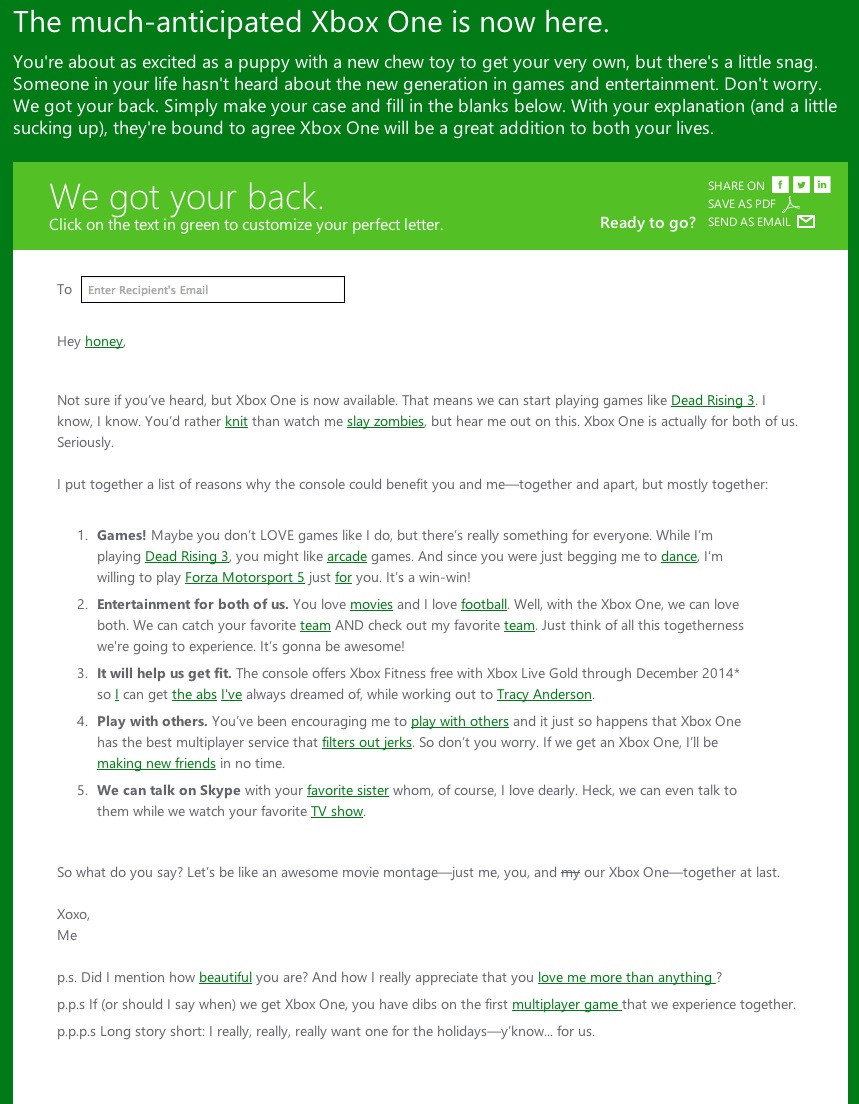
Linux chief: ‘Open source is safer, and Linux is more secure than any other OS’ (exclusive)

In an interview with Linux Foundation executive director Jim Zemlin, VentureBeat got a bird’s eye view of the future of the open-source operating system for 2014.
We also addressed the controversial issues of government spying and “backdoors” — those nefarious windows into our personal online lives that the public recently discovered in most of the services we use every day.
Zemlin gave us the skinny on how and why GNU/Linux remains the most secure option for concerned consumers — and why it’s becoming the OS of choice for powering cars, phones, TVs, and all kinds of emerging devices.
Here’s our email transcript in a bare-naked Q&A format.
VentureBeat: Security and privacy has been the hottest topic this year, bar none. We’ve heard rumors that Linus [Torvalds, Linux creator] okayed a Linux backdoor for the government.
Zemlin: If there were a backdoor in Linux, you’d know it.
The whole world can see every line of code in Linux. This is one of the reasons Linux is more secure than other operating systems and why open source software overall is a safer than closed software. The transparency of the code ensures it’s secure.
And for the record: He wasn’t approached.
VentureBeat: How committed is the Foundation to preserving Linux users’ privacy and freedom from tracking/surveillance?
Zemlin: As committed as we have always been. It’s very difficult to insert something into the kernel that would violate privacy and freedom without thousands of developers noticing. The nature of Linux is that it’s self-policing.
VentureBeat: Do you think there’s any chance that this year’s privacy/security/surveillance issues has driven or will drive more consumers toward Linux distros?
Zemlin: Around the world, I am hearing people say, “Using open source is a critical to ensure privacy.” So yes, I think that will drive more users people to Linux.
I also think more consumers are being driven toward Linux for a variety of reasons, in addition to the confidence and trust they have about privacy and security related to the platform. The transparency of the code and development process gives increasingly knowledgeable and aware consumers an option they feel good about.
Valve and its work on SteamOS is driving more consumers to Linux, as is the ongoing dominance of Android and other consumer devices that run Linux — from televisions to appliances, cars and more.
VentureBeat: Do you have any thoughts on Ubuntu Edge? Where do you see the market for Linux/Ubuntu phones going in 2014-2015?
Zemlin: I like seeing potentially interesting new products go to market, especially when they’re Linux based. It is hard to predict what product will produce a big hit in the phone market from year to year.
I don’t think it is a stretch to predict phones based on Linux will dominate. Android, Tizen, Ubuntu, Firefox and more show that Linux can drive innovation in the mobile market and create new experiences for consumers and market opportunities for developers and OEMs.
What’s exciting about the year ahead and what I’ll be watching is how Linux and open source will help connect all of these devices, objects, and services together.
VentureBeat: What’s the most exciting use case you’ve seen so far for Linux embedded in automobile systems?
Zemlin: No question it’s the in-vehicle-infotainment systems being built by Cadillac, Tesla, Toyota, Jaguar Land Rover and others.
For example, the Tesla Model S, which won the Motor Trend car of the year in 2013, features a 17-inch flat-screen computer running a custom-built Linux OS. This is really, really cool stuff.
And the 2014 Motor Trend car of the year was just revealed — the Cadillac CTS sedan — and also uses Linux for its in-vehicle-infotainment system. Car makers are able to innovate and differentiate with these systems using Linux.
The success of Linux here can be seen in the latest numbers from IHS Automotive, which reported this month that sales of automotive Linux are expected to rise to 53.7 million units in 2020, passing Microsoft and Blackberry QNX in the global automotive infotainment market.
The Linux Foundation does a lot of work in this area with its Automotive Grade Linux workgroup. By hosting a neutral, supportive environment among the Linux kernel community, other open-source communities and the automotive industry, we’re able to help advance automotive Linux technologies among some of the world’s largest automakers including Nissan, Jaguar-Land Rover, Toyota, and more.
VentureBeat: How is Linux growing beyond the hardcore developer market, especially with regard to consumers and gamers?
Zemlin: This year has been a turning a point for Linux with gamers for sure. Valve, the gaming company behind the Steam web platform for Linux, builds and runs all of its source code and animation on Linux. Valve’s CEO Gabe Newell reported at LinuxCon this year that they’re running 198 games on Linux and, with the introduction of the Linux-based Steam, that number will only continue to go up. This is the beginning of a new trend for Linux and gaming.
Consumers use Linux every day. It is the software that runs our lives. Companies like Google, Facebook, and Twitter are built on Linux and open source software. At our LinuxCon Europe conference in October, Twitter’s Chris Aniszczyk told the audience: “Twitter is of course all running on Linux. Why would you need anything else?”
Linux now powers the 1.3 million Android phones that are activated daily, and most of the nearly 600,000 new TVs sold every day. New appliances and cars are being built with Linux. Major transportation systems use the operating system. The super popular GoPro uses Linux and open source. The examples are endless.
And Linux and open source will just keep reaching more into mainstream consumer life. Samsung uses the Linux kernel and Linux-based products throughout its product line, from TVs to phones to home appliances and more.
Stay tuned — you’ll see more coming that illustrates the growing role of Linux and open source software and collaborative development in everyday life.
VentureBeat: What are the biggest opportunities for free and open-source software in 2014, in your opinion?
Zemlin: We’ve talked about gaming and consumer devices but the enterprise continues to present even more opportunity for Linux. The rise of cloud computing is creating new challenges for developers and new opportunities for growth. Try to find a public cloud that’s not running Linux.
The realization of years of promise in software defined networking will be one of THE major stories of 2014. People don’t appreciate how big software defined networking and network function virtualization will become. Think about it. Billions of dollars are spent on hardware based switches, routers, load balancers, firewalls, etc; this is all being abstracted into software. More importantly it is being abstracted via open source software in the sweet spot for OSS which is at this infrastructure layer. I think you’ll see projects like OpenDaylight and others have a big breakout year in 2014.
Of course this is all part of a broader trend towards collaborative development, which should be of interest to your readers. I’d predict that in another decade nearly all of infrastructure software will be built collaboratively. Developers in 2014 need to learn how to build software collaboratively and how to work on and contribute to open source software projects. Their career opportunities will be endless if they understand the principles of collaborative development and open source software.
It’s a thrilling time to be involved in Linux. It’s become the de facto platform to go to for everything from smart watches to TVs to automobiles, you name it.
Best practices for building cross-platform mobile apps
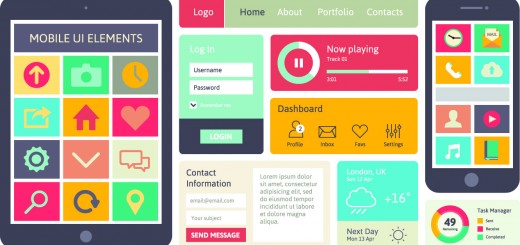
Michael Thomas is the Principal Development Lead for SkyDrive, Microsoft’s personal cloud storage service. In his role, Michael is responsible for many facets of product development, including planning, technical investigations, quality assurance and execution.
A promise of cloud storage is the customer’s ability to access data from everywhere, anytime, on any device. As such, mobile device support is a critical component of a successful cloud storage service.
Given the current mobile device market, customers need high-quality apps on the top three platforms: Android, iOS and Windows Phone. However, designing and building apps across these platforms can lead to a myriad of challenges, among them the need to reconcile the unique native languages of each platform while creating an elegant, consistent user experience.
Outlined below are some key lessons learned from working on mobile clients for SkyDrive, Microsoft’s personal cloud storage service, and best practices for anyone looking to build high-performing mobile apps across platforms.
Step 1: Select the development technologies
One of the biggest challenges in developing cross-platform mobile apps is that each mobile platform has a native language and SDK, or software development kit. Windows Phone has C# with .Net, iOS has Objective C with Cocoa and Android has Java with the ADK. There are also solutions that allow code sharing; HTML5 can be run on all three platforms, as can code written in C++.
We found that using the native language and SDK on each platform had significant advantages in supporting the full functionality of the platform, ease of development and high performance. It also provides the quickest access to the new features of new operating system versions and SDKs. For the best experience, the advantages of the native platform are paramount.
HTML5 provides the ability to update application functionality by updating a web server from which the HTML is downloaded, which could be a good solution for some applications. C++ could also be a good solution for some common cross-platform modules.
However, access to the platform functionality and writing the user interface would be more difficult in both of these cases. You may still have to combine these options with native SDKs to utilize some platform unique functionality.
Step 2: Define the user experience
In some cases, the desired application functionality may be the same for each platform. But customers of each platform expect the style to be similar to the other applications that they use. A good motto here is “application personality, platform look and feel.”
With application personality, customers can feel the unique values provided by your applications. The applications on different platforms can have many things in common to identify themselves, such as similar color themes, features and flows for user actions. Even if a customer switches platforms, he or she should still be able to use the application with little or no ramp-up time.
With platform look and feel, the customer interactions will be similar to other applications on the platform, and customers can immediately use the application. For example, the command icons will be in the same place on the screen as other applications on the same device.
To illustrate the concept of “application personality, platform look and feel,” here are screenshots of the same screen for iOS, Android and Windows Phone:
Step 3: Develop rapidly and use the application
In the mobile space, the competition is fierce and customers expect updates on a regular basis. Traditional product development processes with long planning, development and test phases can take months, or even years.
A better approach is to adopt a rapid release cycle process. Each release cycle should contain a set of smaller features which can be developed in a few weeks or less. Each release cycle can be a logically complete set of features which could be released if desired.
While stabilizing the code, some team members can start planning the next release cycle. In this way, release cycles can keep rolling, and customers can enjoy the updates they’ve come to expect.
For ease of development and maintenance, applications should have similar designs for the non-platform specific logic, such as the business logic and the common infrastructure to handle user actions. Developer expertise can be leveraged if the same developer owns a feature across platforms.
A key to providing quality in this environment is early customer feedback. Real customers will use the applications in ways that cannot be easily recreated in the lab. They’ll experience a wide variety of network characteristics, and use their own data. In addition, they’ll use the application on a wide variety of devices.
The best way to achieve quality in these situations is to get the applications into the hands of as many people as possible prior to release. A dog food program reaching a business group, social group, friends or potential customers adds a lot of value and also helps build enthusiasm for the application. The application should provide an easy mechanism for those early users to report issues; a single tap to report issues greatly improves the chance of getting more feedback.
Keys to Success
If the aforementioned steps are followed, you’re in a great position to offer a high-quality cross-platform app. Below are some additional considerations that will greatly increase your chances of success.
Provide a great customer experience
With the small screen sizes, it can be hard for a customer to see all of the data and find the all of the needed commands; the application needs to make navigation easy. Most of the screen space should be devoted to showing the data the customer wants to see, and the most important commands, status, etc. should be on the screen.
Any less commonly used items can be moved to menus or other dialogs. Always ask the question, “How may taps does a customer need to finish an operation?” Fewer taps make customers more likely to use a feature.
Tune the application for high performance
This is critical in an environment where the customer is typically watching the application while it runs, and the hardware and network may be slow. Response time and CPU-Memory-Network consumption are the key areas that should be examined.
To improve the response time, move all of the time-consuming operations to the background to free up the UI thread for user interactions. When showing a large list, load the data one page at a time from the network to reduce waiting time for users. Caching the resources downloaded from your servers can save considerable network consumption and reduce the response time dramatically.
When the underlying data changes, you should update only those UI elements affected by the changes. Keeping the memory footprint small reduces the chances that the operation system will remove the application from memory when it’s in the background. When users come back to the app, it starts more quickly.
It’s best to run monitoring tools against the app frequently to find and fix CPU, memory and network consumption issues.
Interact with other applications
With hundreds of thousands of applications in the app store, mobile customers can do many different things on mobile devices: texting, receiving/sending emails, social networking, browsing content and even editing documents. They expect their applications to work together, and enabling interaction will drive usage of your application.
Monitor customer feedback
One of the great things about mobile applications is how quickly feedback becomes available in product reviews and blogs. This feedback enables developers to quickly address urgent issues and is a source of ideas for future improvements.
Image credit: bloomua/Shutterstock
PowerUp Toys will make iPhone-controlled paper airplanes fly for 10 minutes

PowerUp 3.0 attaches a motor to a paper airplane. Fly it with an iPhone.
PowerUp Toys is raising money via crowdfunding for a novel and clever idea: attaching a real airplane motor to a paper airplane. Once you do that, you can fly it with an iPhone’s touchscreen.
It’s a zany idea from Shai Goitein, an inventor who has worked on the idea for six years. He calls this version PowerUp 3.0, and he hopes it will be the one that makes it into mass production. The company hopes to raise $50,000 in a Kickstarter campaign that is starting today. If it works, it could turn out to be a happy marriage of homemade toys and cutting-edge technology.
Goitein is a former pilot who loves to fly and wanted to share the joy of flying with kids and adults alike. Paper airplanes, of course, fly only for a few seconds. But with the motor and control system that Goitein’s company has built, they can have a range of 180 feet and fly for 10 minutes.
“Magical is the feeling when your home-made paper plane soars into the skies and doesn’t come down,” Goitein said in an email.
Goitein is trying to pack as much technology into as small a space as he can. His whole rig weighs eight grams, and the circuit board is just three grams.
“Our goal is to make you feel like the Wright brothers when Flyer I took to the skies,” Goitein wrote. “We want to empower you to design your own flyer and conquer the skies with our module.”
PowerUp 3.0 is entirely controlled by the app. If you tilt your phone, you can control the high-precision rudder, making the plane go right or left. Sliding the thrust lever on the touchscreen will increase propeller speed and allow the airplane to gain and maintain altitude. The circuit board weighs 1 gram and is powered by a Lithium Polymer battery.
The company is based a half hour outside of Tel Aviv in Israel and has six employees, including Goitein. Rivals include all sorts of radio-controlled model airplanes, but no one is trying to give this kind of performance to paper airplanes, Goitein says.
The PowerUp system uses the iPhone to communicate via Bluetooth Smart, the lower energy version of Bluetooth, with a Texas Instruments chip on the tiny green printed circuit board. That allows you to control the thrust and the rudder, giving you full control over the airplane. Goitein has been toying around with planes since age 7. He moved on from paper planes to hang gliders as he got older, and he spent 15 years as a cargo pilot for the Israeli air force. He became an industrial designer, and he also worked for 10 years as a manager of B2B product design for Kodak.
 He collaborated with another startup, TobyRich, based in Bremen, Germany, to get help with the Bluetooth Smart solution for gadgets. That helped Goitein move from a radio-controlled module to a smartphone-based control. Goitein got excited about the project in 2007 when he volunteered to teach immigrant kids the principles of aerodynamics. He did research on advances in micro indoor flight and came up with the idea for a remote-controlled paper airplane. The idea gathered momentum, and by 2011 he incorporated a company to build the device.
He collaborated with another startup, TobyRich, based in Bremen, Germany, to get help with the Bluetooth Smart solution for gadgets. That helped Goitein move from a radio-controlled module to a smartphone-based control. Goitein got excited about the project in 2007 when he volunteered to teach immigrant kids the principles of aerodynamics. He did research on advances in micro indoor flight and came up with the idea for a remote-controlled paper airplane. The idea gathered momentum, and by 2011 he incorporated a company to build the device.
In 2012, PowerUp 1.0 won the ATA Best Hobby Award and was featured on The Tonight Show with Jay Leno. In 2013, Goitein showcased an early prototype of PowerUp 3.0 at the New York Toy Fair, where it won the Popular Science “Best of Toyfair” Award.
The iOS design is complete, but the Android version still needs testing. Goitein believes he is pushing the limits of Bluetooth Smart technology.
“We do something that nobody has done before,” Goitein wrote. “It’s surprising to people when [they] see that it really works.”
Check out our photo gallery below.
Only 25% of Yahoo Staff "Eat Their Own Dog Food"
Read more of this story at Slashdot.
Lonenote is an adorable photo app that lets you add handwritten notes to your images
Most photo apps today are tied to other social networks and use the Twitter-style follower/following mechanism for keeping up with others. Lonenote leaves all of that at the door, it’s instead built for people who want to “express their moments alone” in a private space that’s not linked to Twitter or Facebook.
When adding a photo, the app prompts you to create a handwritten caption, which you can move to sit anywhere on the image before you upload it.
The app is refreshingly designed with simplicity in mind: there are no usernames, but users can leave anonymous comments and like other people’s photos — though you can’t share links outside of the app to social networks or the Web.
There aren’t a tonne of images on the service just yet, but if you’re bored of Instagram and want to experiment with something different, Lonenote might be worth tinkering with.
➤ Lonenote for iOS | Android coming soon
Thumbnail image via FotomanufakturZ / Shutterstock
Disclosure: This article contains an affiliate link. While we only ever write about products we think deserve to be on the pages of our site, The Next Web may earn a small commission if you click through and buy the product in question.
Study Finds Digital Activism Is Effective, Mostly Non-Violent
Read more of this story at Slashdot.
What I’ve learned about creating meaningful work
bijansounds like a mini "How to do Startup?" to me :)

Paul Jarvis is a Web designer and author. His latest book, Everything I Know, is now available.
Working for yourself is scary stuff.
When you work for someone else, it’s easy to blame failings or frustrations on the boss, the company or even the customers you’re forced to deal with.
But when you run the show, it’s all on you.
Self-employment is the ultimate life experiment, complete with an uncountable number of variables that come with large amounts of fear and challenges. But for those of us who do it, we don’t know any other way. We aren’t content with the status quo and feel the need to hack it. To innovate. To make something new.
I’ve been on this path for over 16 years, mostly writing and making websites, but I’ve also started a handful of other ventures that have absolutely flopped. I’ve also started businesses that did well but I ended up closing them down— it’s surprising how easy it is to build a business you hate, and then it’s nobody’s fault but your own.
Along the way, I’ve learned a few things, not just about doing well at working for yourself, but how I could actually enjoy working for myself.
Here’s what I’ve learned:
Just start
Don’t think too much about starting something or you might talk yourself out of it. The caveat is that sometimes your ideas may be awful and not work. That’s why it’s important to start in small steps (with little to no money on the line). Every huge idea can be boiled down to a smaller one, sort of like a prototype. Start there, and start now.
I started writing my first book before I thought too much about it. At first I approached it from the standpoint that it was just a fun little project, just for myself. I didn’t know anything about writing a book or cooking (it was a vegan cookbook), and if I had actually thought it through, I probably wouldn’t have done it. It’s now sold thousands of copies.
Experiment
I like to frame my business ideas as experiments (no lab coat required). I do this because experiments don’t fail, they simply show results. Sometimes those results are great and point you in the direction for bigger and better things. Sometimes they just show you what idea isn’t worth pursuing.
The main thing, in either scenario is not to focus on the results but instead to focus on the work at hand. The Bhagavad Gita (an ancient Yogic text) says something similar—that we are not entitled to the fruits of our labour, but only to the labour itself. This is a bit of a heady concept, but understanding it keeps you from feeling entitled (which always leads to bad things).
Make your own path
There’s no guarantee for success in business. So although it seems appealing or easier to model your business after one that’s successful in your niche, doing so won’t guarantee success.
And even it does, you’ve succeeded on someone else’s terms instead of your own. Since it’s not a sure thing either way, why not do things your way? I guarantee it’ll be way more meaningful, too.
Show up
I write at least 500 words a day, every day, no exceptions. I’ve done this for at least a year. I do it especially when I don’t want to or don’t feel inspired. Why? Because I want to increase my odds of writing something good.
 Some days what I write is utter garbage, and that’s okay, because that’s not the point. But unless I show up to work at what I do as often as possible, there’s no hope that inspiration will show up as well. And some days, when I think I’m horribly uninspired, my best work flows out.
Some days what I write is utter garbage, and that’s okay, because that’s not the point. But unless I show up to work at what I do as often as possible, there’s no hope that inspiration will show up as well. And some days, when I think I’m horribly uninspired, my best work flows out.
We’ve got to get the idea out of our heads that our work (especially if it’s creative or art-related) is so precious that it requires almost divine intervention in order to be done. The best artists chip away at their creations like any other job. So if the muse is looking, she’ll see they’re hard at it and hopefully whisper in their ear.
Be present
When you start doing work for yourself, it’s great (and fun) to have dreams, goals, plans about the future and when you might make it big. But what’s more important is to have clear focus on what’s directly in front of you—which, in most cases, is hard work.
The more present you can be with doing the actual work, the more actual work you’ll get done. As I said above, the more we focus on the labour, and less on the results of that labour, the better the work will be. We need to get out of our own heads sometimes and just do the work in front of us.
Launching is better than perfecting
If the work we do is on a road that leads in two directions, one of those directions would lead to launching and the other (the opposite) would lead to perfecting.
Perfection isn’t something that can ever be attained with the work we do, and the more we walk towards it, the more it stays a distant dot on the horizon, always just as far away from us as when we started.
Whereas launching is a definite point on the road. We see it clearer the closer we get to it. And the best part is, we can actually reach it if we work at it.
I’ve ruined products by getting stuck in an endless loop of trying to make them better. Until I reached a point where I was so frustrated that it wasn’t perfect that I then lacked the drive to push it towards launch.
Getting something—anything—out the door is the most important part. Make it great, sure. But acknowledge where great leads to diminishing returns.
Stop judging, stop comparing
We are horrible multi-taskers. Yes, I’m talking to you friend, the person who thinks they are awesome at it. I’m also talking to myself, for every time I leave social media open because I think I can do actual work and keep up with status updates and retweets and blah blah, all at the same time.
This multi-tasking, in one of its worst forms, appears as judgement and comparison. We troll the internet to see what other people are doing so that we can judge our work by comparing it to theirs. If they’re further along than we are, we tell ourselves we’ll never get to where they are. And this keeps us from starting our own thing.
There’s no true comparison because everyone’s different in terms of the values they hold their work to, and more importantly, everyone’s at a different place in their journey.
We also judge ourselves, often too harshly. We need to fall out of love with our inner critic—because it rarely, if ever, serves us.
Tiny pieces
If someone told me “write a book!”, I’d freeze up and be overwhelmed. It wouldn’t get done because it’s too big a project to think about in its entirety. But if I break it up into outlines, chapters, single ideas, then it’s manageable. If I focus on one idea or chapter at a time, it seems doable.
The same applies with to-do lists—if you can check off those to easy-to-accomplish tasks each day, you’ll feel better about yourself and therefore have more energy to keep doing your work. If “write a book” was on there, you’d look at it every day and feel frustrated or awful that it wasn’t yet done.
Busyness does not equal productivity
There aren’t badges handed out for the long work week, and if there were, I’d have gotten a few (in my early days, I used to work 80-100 hours a week) but they wouldn’t have been worth it.
 Then I realized I didn’t need to work so many hours because I didn’t really have a good reason to. I wasn’t trying to make the most money or work myself to death (or at least sickness), so I stopped.
Then I realized I didn’t need to work so many hours because I didn’t really have a good reason to. I wasn’t trying to make the most money or work myself to death (or at least sickness), so I stopped.
Instead, I began focusing on how I could get my work done in the most efficient way, so that I was then free to do other things—like hiking, hanging out with my wife and pet rats or traveling.
Work smarter, not more. And the best part is, the more you are present and focused, the quicker the work gets done.
Your intentions shine through (even if you don’t want them to)
Whatever our intentions are, they are evident to others because we are mostly horrible liars. And sometimes we’re just lying to ourselves.
This is why sales pitches sound like sales pitches. This is why most commercials are immediately identifiable as commercials and not short TV shows.
We can innately see what the other person is really after. So why not be after something good? That way, when people see through what you’re really after, they’re happy about it, instead of angry or disappointed.
Whenever I do well with my work, it’s because I’m focused on helping someone or was excited to collaborate, instead of just wanting to making money off them. It’s an easier and better way to do things that ends up always “paying off” favourably.
***
The most important thing that I’ve learned (bonus #11!) is that the best advice is to listen to yourself. Everyone’s got an opinion about working for yourself (myself included, obviously), and while it’s all well-intentioned, nothing takes the place of trusting your own journey.
No artist ever said, “Well, I just painted my masterpiece… hello retirement!”
There’s no end point (except maybe death? or going back to working for someone else?). There is always learning to do and growth that can happen.
I learn new things every day about what I do, and I’m thankful for it.
Image credit: ollyy/Shutterstock
Today’s Google Doodle is a fun game in honor of Doctor Who’s 50th anniversary
bijanit's my favorite Doctor ;)
Google regularly uses its homepage to pay homage to special people and events, and today it’s the turn of classic British TV show Doctor Who, which celebrates its 50-year anniversary.
More than just a decorative banner, today’s Google Doodle is a game that sees you assume the position of one of the (many) doctors and take on a number of different adversaries.
If the Doodle isn’t showing for you, you can visit www.google.com.sg (among other local portals) for a chance to test your Dalek-assassination skills.
Thumbnail image via Chris Harvey / Shutterstock
Google's Schmidt Predicts Government Censorship Can Vanish In A Decade
bijanit's a story many people wish to believe :)

“I believe there's a real chance that we can eliminate censorship and the possibility of censorship in a decade,” Google Chairman Eric Schmidt said recently at Johns Hopkins University. “The solution to government surveillance is to encrypt everything.”
Currently, citizens of oppressive regimes have a few ways of sneaking around government Internet blocks, including encrypted virtual private networks, which re-routes traffic through servers outside of the host country.
“It's always a cat-and-mouse game,” said Schmidt. Last spring, for instance, the freedom-loving government of Iran cracked down on the use of VPNs. Those who choose to abide by the law are subject to the censorship whims of governments which sporadically block media social media sites that permit dissenting or culturally sensitive material.
Wikipedia has a running tally of all the governments that block the Justin Bieber and cat circus that is YouTube.
“In that race, I think the censors will lose and I think the people will be empowered,” said Schmidt.
No word on how exactly it will end, though. We can imagine a system where traffic is so encrypted that neither the location, content, or destination is visible to government censors. Or, perhaps the the architecture of the net will change so that only governments can meaningfully identify traffic they don't like.
Ever the optimist, Schmidt thinks that democratic ideals will pervade in China, even with censors.
"You cannot stop it if it's a good idea broadly held," he said. "That's how China will change."
Mystery Humans Spiced Up Ancients' Sex Lives
Read more of this story at Slashdot.










